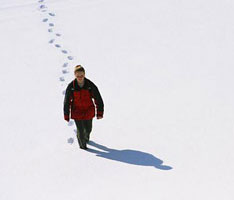
 "Begin
at the beginning" the King said, gravely, "and
go on till you come to the end; then stop."
"Begin
at the beginning" the King said, gravely, "and
go on till you come to the end; then stop."
Alice’s Adventures in Wonderland – Lewis Carroll
Every presentation has a beginning a middle and an end. It may seem obvious but if you follow this approach there should be no great problems.
Starting a presentation
This is the most important part of the presentation and serves two main purposes
- To act as an attention grabber for the audience
- To let your elevated levels of adrenaline and testosterone racing through your blood stream settle down, so that you can relax into your presentation
This may well happen while the audience are finding their seats and wondering what is going to happen next. There is no right and wrong attention grabber, but here are some of the ones that I have found to work.
- A funny story (if humour is your thing – but avoid religious, sexual, sexist or racist jokes)
- A video clip, but if you use one, make sure that it is less than 60 seconds
- Unusual statistics about your industry or about your audience
- A cartoon. I personally use the cartoons from Ted Goff
- Suspense (e.g. walk on with a cardboard box and place it in the middle of the stage – but don’t tell people what it is there for)
The middle of a presentation
A good presentation technique is the rule of three.
The rule of three is based on the technique that people tend to remember three things. In oratory it comes up all the time. Here are some examples:
"Friends, Romans, countrymen"
"The good, the bad and the ugly"
"Blood, sweat and tears"
Think about it – if there are only three points that I would like to leave my audience with, what would they be? There you have the middle of the presentation.
All you now have to do is to think of ways of illustrating these points and then you have the bulk of the structure of the presentation.
The end of the presentation
The end is more important than the beginning. There is a psychological factor called recency. This is where people remember most the last thing that they are told. This particularly applies to lists.
So the ending of the presentation is key.
There are a number of techniques that can work well, but they should be all related to the main structure of the presentation.
Ideas include;
- A funny story (one that encapsulates at least one of the main themes of the presentation,
- A high energy video clip,
- Relieving the suspense (you may be wondering why I brought this cardboard box onto the the stage…)
If you are really struggling for ideas, and want to play it safe, you could simply recap on the three main concepts that you have put forward in the middle section.









